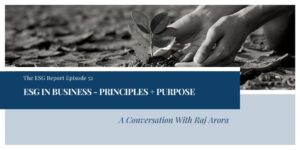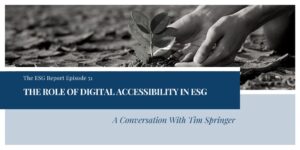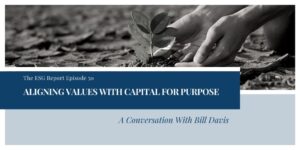
Tom Fox welcomes renowned compliance leader, Ty Francis, to the ESG Report! Ty is the Chief Advisory Officer at LRN; he leads the company’s worldwide ethics and compliance consulting, ESG, and community outreach strategy. In this week’s episode, Ty and Tom discuss LRN’s new report, Assessing Corporate Culture, and how it relates to ESG.
The Genesis of the Assessing Corporate Culture Report
Tom asks Ty about the genesis of the LRN report. This is the second report LRN produced; the first one was about activating culture and ethics in the boardroom. Their previous research led the team at LRN to realize that most corporate boards did not understand culture. Ty says, “Over the last 10 years culture is so high on those lists, but when you look further into the survey and ask them what they’ve done to measure this culture, it’s nonexistent.” Therefore, LRN sought to discover the general opinion on culture and ethics compliance and provide a roadmap on how to activate these skills within a company.
Roadmap for Building Corporate Culture
Tom highlights how the report can be used as a roadmap to build culture. Ty says that building corporate culture starts with defining ethical culture. Ethical culture is the codification of what an organization stands for and the systems that support those beliefs; the core architecture should be reinforced by leadership in how they model desired behavior. The second step in building culture is getting to know the most valuable members within your company, in each department. Culture is extremely important for building relationships within a company and allowing people to hear opinions from all sides.
The Relationship Between ESG and Corporate Culture
The culture within a corporate setting has always been an ESG issue. The governance aspect of ESG is directly related to culture as it is something that companies should have been implementing for years. Ty remarks, “It shows the company’s values across the board, and I think when you have a mismatch of what the company says it’s doing and what they are really doing, that can fragment any ability for a company to demonstrate that it is really a forward-thinking, future-expanding company.” The governance is to be upheld by the board, stewards, stakeholders, and managers. He lists five key considerations for boards:
- prioritizing culture on the board agenda,
- challenging the board’s culture,
- mentoring and monitoring,
- articulating the desired culture, and
- establishing clear communication.
Looking Ahead
Acknowledging the new legal and regulatory requirements, public pressure and the evolution of thinking surrounding corporate culture, Tom asks Ty if he believes that boards will maintain the corporate culture into 2025 and beyond. Ty believes these pressures will force boards to manage and maintain the corporate culture.
Resources
Ty Francis | LinkedIn | Twitter
LRN | LRN Report – Assessing Corporate Culture | LinkedIn | Twitter | LRN Report – Benchmark of Ethical Culture |







